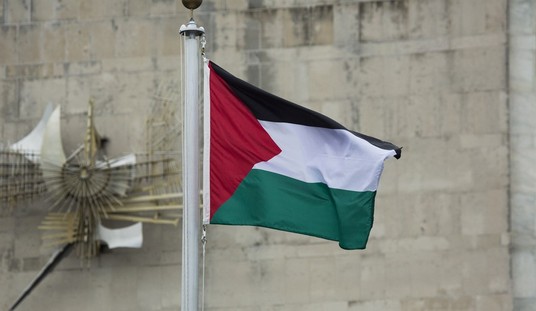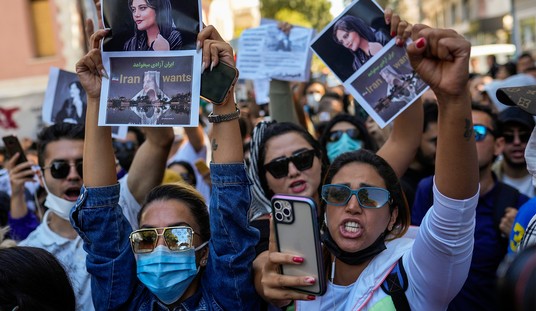I’ll warn you up front that this is probably one of those stories where some people on the right are going to mock it as the dumbest thing they’ve ever heard (or close to it) but my first impression is that it makes a certain amount of sense for reasons I’ll explain later.
The gist of the article is that a police chief in Nebraska has decided on a new approach to deal with “toxic masculinity” in policing. His solution is to hire more women as police officers. The piece opens with this vignette.
Officer Karen Wrigley’s pink nails tapped her body camera as she stepped from her cruiser into the cold. “You want to open up the door?” she asked the middle-aged Black man sitting in a parked minivan. “You’ve got an arrest warrant.”
The man had a criminal record for assault and other offenses, had run from Bellevue police before and was wanted for missing a court date for a traffic violation. He had no interest in returning to jail. “That’s horses—!” he cried, as Wrigley and her colleagues asked him 11 times over 15 minutes to exit the vehicle.
Wrigley, who is White, never raised her voice. She got on the phone with his lawyer through a cracked-open driver’s-side window — a window she had the right to bash in, given the circumstances. As reality set in, the man smoked two cigarettes and cursed his luck. He finally exited the car, remarking that he was freezing.
“Yep, us, too,” Wrigley said, handcuffing him. “Just to let you know, others aren’t going to be as nice as me.”
The person behind this is Police Chief Ken Clary who, according to the story, came upon this strategy after attending a conference.
As a captain for the Iowa State Patrol seven years ago, Clary hadn’t given much thought to the dearth of women in policing (nationwide, about 7 percent of state troopers are female). He did notice that the two women under his command drew citizen complaints far less than many of their male peers. In 2016, he attended the National Institute of Justice LEADS Scholars Program in Washington, where he was introduced to a wealth of academic research indicating female officers excel at de-escalation and use force less frequently than male officers…
Clary describes himself as politically conservative. There’s a Ronald Reagan quote about delegating authority framed above a bookcase in his office, and twin photos by the door of Clary shaking hands with George W. Bush and Dick Cheney. But he says he doesn’t always agree with Republicans on social issues. And in managing his department, he preaches that hiring and retaining people from more diverse backgrounds is of paramount importance.
So Clary isn’t a far left activists but he has adopted this idea about hiring more women and minorities because he’s convinced they can bring something different and useful to the work. The story notes that research on this is mixed.
Female officers are, on average, more educated than male officers, more likely to engender the perception of fairness in the communities they police, more efficient in carrying out traffic stops that result in drug seizures and more effective in sex assault and domestic violence investigations, other studies show. Experts say female officers are less likely to fire their guns in the line of duty, use excessive force or become the target of successful civil suits.
Still, there are a few studies that found only minor differences in use-of-force incidents among male and female officers. And some research indicates that diversity cannot be a cure-all for departments, especially when traditional training and police culture remain in place. A 2003 look into police killings found that overall department diversity had little impact on outcomes, for example. A 2005 study of a suburban Maryland police department determined the difference between men and women in use of force to be statistically insignificant.
That link about female officers firing their weapons comes from a Pew study published in 2017:
…only about a quarter (27%) of all officers say they have ever fired their service weapon while on the job, according to a separate Pew Research Center survey conducted by the National Police Research Platform. The survey was conducted May 19-Aug. 14, 2016, among a nationally representative sample of 7,917 sworn officers working in 54 police and sheriff’s departments with 100 or more officers…
Not all demographic characteristics are equally good predictors of gun use. Gender is one of the best, this analysis finds. Male officers are more than twice as likely as female officers to have fired their weapon (30% vs. 11%). This relationship remains significant even after accounting for gender differences in job assignment, length of service, race, age, the size of the city and department they work for, and other factors.
But as mentioned above, a 2005 study found very different results:
Female officers had a lower rate of any suspect injury and of weapon use when all types of weapons were considered together. However, there were no gender differences in the rate of suspect injury resulting in hospital treatment. Overall, the differences discovered between male and female officers in their use of force were small, even when statistically significant.
So this isn’t a settled issue but in Bellevue they’re seeing some early signs of improvement.
One early insight: For incidents from September to December in which officers used force, the involvement of a female officer in a group effort yielded 8 percent fewer injuries. And in use-of-force incidents involving only one officer, none involving a female officer resulted in injury, according to the department.
As I said above, I know some are going to see this as just another leftist DEI effort but I think there are reasons for giving efforts like this a chance. For one, I think the idea that women officers police differently reinforces the currently unpopular idea that women and men are different in some fundamental ways. It makes sense (to me at least) that the sex that is generally smaller and not as physically strong is going to be less quick to use force and innately better at deescalating situations.
Frankly, this isn’t PC to say but it’s how I honestly see it, I think male suspects who have something to lose (like going back to jail) are prone to be chippy and ego-driven when dealing with other men. There’s still some primitive sense that backing down to a challenge by another man (even a perfectly legal one from a police officer like ‘get out of the car’) is a sign of weakness. Women don’t present the same kind of challenge to the male ego.
It’s not hard for me to believe that women and men are different and that those differences could manifest in real life policing situations in ways that might help keep situations from escalating. Of course that doesn’t mean I want to see all of the men run out of the force. There’s going to be a time when negotiations fail and you need some “toxic masculinity” on tap. There is a time and a place for that kind of aggressive violence.
But as the Pew study suggests, it happens a lot less in reality than it does in the movies. Only 27% of officers have ever fired their gun while on duty. Most of the time, offices are talking and, only when that fails, wrestling with subjects. For the bulk of that work a different approach might yield some different results. At least I’d be interesting in letting it play out to see if it makes for better policing. And if it doesn’t work, that will be worth knowing as well.








Join the conversation as a VIP Member